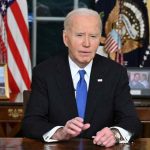WASHINGTON (Reuters) – U.S. business inventories rose moderately in January amid a sharp rebound in consumer spending at the start of the year, and it is now taking businesses the shortest time in nearly nine years to clear shelves.
Business inventories increased 0.3% in January after rising 0.8% in December, the Commerce Department said on Tuesday. Inventories are a key component of gross domestic product. January’s gain was in line with economists’ expectations.
Inventories fell 1.8% on a year-on-year basis in January.
Retail inventories decreased 0.5% in January, instead of 0.6% as estimated in an advance report published last month. That followed a 1.7% increase in December.
Motor vehicle inventories dropped 1.5%, rather than 1.4% as previously reported. Retail inventories excluding autos, which go into the calculation of GDP, dipped 0.1%, instead of slipping 0.2% as estimated last month.
Domestic demand is picking up after slumping late in the fourth quarter, driven by declining COVID-19 infections, an acceleration in the pace of vaccinations and additional pandemic relief money from the government. Households have also accumulated $1.8 trillion in excess savings.
Economists estimate the economy could grow this year by as much as 7%, fueled by the massive fiscal stimulus and rollout of vaccines that are expected to get the pandemic under control. That would be the fastest growth since 1984 and would follow a 3.5% contraction last year, the worst performance in 74 years.
Wholesale inventories increased 1.3% in January. Stocks at manufacturers gained 0.1%.
Business sales shot up 4.7% in January after rising 1.0% in December. At January’s sales pace, it would take 1.26 months for businesses to clear shelves. That was the shortest time since April 2012 and was down from 1.32 months in December.
(Reporting by Lucia Mutikani; Editing by Paul Simao)
Powered by WPeMatico






